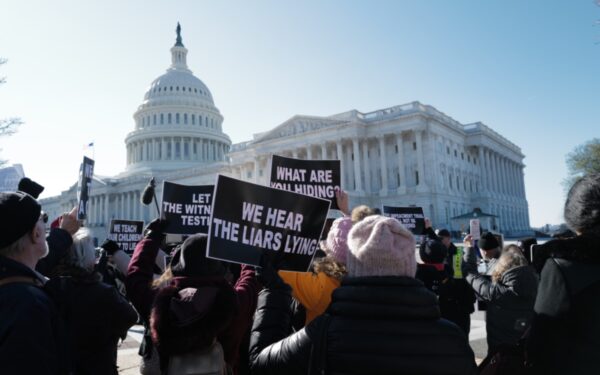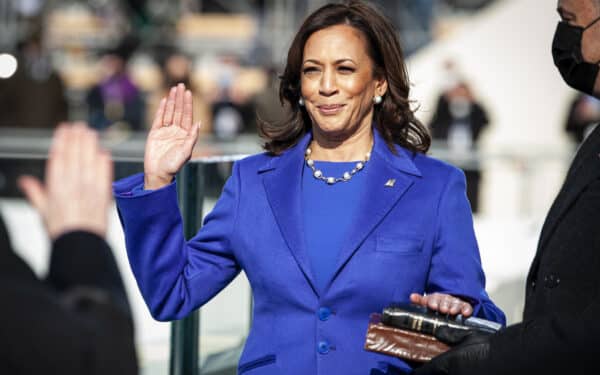Financial markets were in free-fall around the world again last week as investors hit the sell button on fears that President Trump’s trade feud with China will escalate into an all-out global trade war.
While the tariffs on China cover less than three per cent of total US goods imports, investors are fearful that China will find ways of hitting back at Trump’s provocation. As if that wasn’t scary enough, they are also horrified by the appointment of foreign policy hawk, John Bolton, to replace HR McMaster, as national security adviser. They fear that Bolton, who worked under Presidents Reagan and both Bushes, was a big supporter of the Iraq war, and has backed attacking both North Korea and Iran, will encourage Trump into even more bombastic behaviour.
Yet for now at least, Trump’s attack on China is a simple numbers game. The US imports billions more goods from China each year than it exports, creating a deficit of about $375bn last year – almost half of the US $800bn trade gap. Trump wants that deficit cut immediately by $100bn, and hopes to persuade China it should do so by imposing impose $60 bn worth of tariffs on Chinese imports.
The plan is to jack up prices on about 1,300 Chinese products ranging from raw steel – which gets a whopping 25% tariff – to aerospace, to machinery sectors. As well as attacking China’s physical goods, Trump has been even more tart about China’s alleged intellectual property theft, claiming the country has stolen hundreds of billions of dollars from US companies each year by forcing them to sign over technology secrets.
Trump’s attack on China should not come as a surprise: he’s been threatening penalties on trade rivals every since he’s been in office.
While the President claims this latest move is on the grounds of national security, the real motive is more to do with Trump’s obsession with restoring steel making and bringing back more manufacturing to America’s rustbelts.
More than a third of all the steel consumed in America is imported. Trump has made it plain that he wants the US to be producing another 10m tonnes of its own steel a year, taking domestic production back up to 80%.
Ironically, China is not even in its top ten steel importers – it makes up about 1% of the US total. China exports 800,000 tonnes a year to the US which is tiny compared to the six million tonnes a year arriving from Canada. By far the lion’s share of imports come from Canada, Brazil, Mexico, Germany and the EU – all countries which have so far been given a temporary exemption from the punitive steel and aluminium tariffs.
This is great for the UK which exports about £360m worth of steel to the US, about 7% of the total. Thanks to weeks of trade discussions and lobbying by Liam Fox, the trade secretary, and EU officials, UK Steel is confident that some sort of permanent agreement can be hammered out over the next few months that suit both sides. It’s in everyone’s interest to do so: Donald Tusk, president of the European Council,has made it abundantly clear that the EU will do all it can to avoid protectionism with the US to protect jobs and avoid a trade war. The EU has much to lose: the US is the second biggest export market for the EU steel sector after Turkey. Last year, the EU exported 4.9m tonnes across the Atlantic – or around 5.6bn euros. If tariffs of 25% were imposed, this would have a big impact on export volumes.
As well as trying to negotiate new terms with the EU – particularly over lowering tariffs on US cars – the US is also negotiating with Canada and Mexico, the biggest steel makers, and members of NAFTA.
Which seems to make it all the more bizarre that Trump has chosen China for its most punitive action, particularly as relations between the two Presidents was looking much warmer.
Yet it is not odd. Trump wants to get the trade surplus down but he also wants to punish China because it is the world’s biggest steel manufacturer. Despite huge global overcapacity, China still makes half of the world’s steel production and has been flooding markets with cheap steel. Stricter anti-dumping measures have helped control the exports. Even so President Xi Jinping, for domestic reasons, does not want to have to close steel plants because of the loss of jobs and honour.
For now, Beijing appears to have responded cautiously to Trump’s assault; China owns a big chunk of US debt so the country can’t afford for this feud to become an all-out trade war. To date, President Jinping has indicated that, unless the two countries can reach agreement over the next few weeks, China will hit back with tariffs of up to 15% on 120 American products ranging from exports of soybeans, sorghum and pigs — carefully crafted to affect rural Americans, the very voters Trump promised to help. There will be, he says, a second round of tariffs of up to 25% on other goods if agreement is not reached.
What’s remarkable about this latest fracas is that anyone should be in the least bit surprised by Trump’s protectionist, tub-thumping behaviour. The US President has been utterly consistent in his view for the last forty years that American international trade policy has been a disaster, and that foreign rivals should be made to pay the price.
In an interview with Oprah Winfrey in 1988, Trump warned about Japan and the Gulf oil states, saying:
“They come over here, they sell their cars, their VCRs, they knock the hell out of our companies. And, hey, I have tremendous respect for the Japanese people. I mean, you can respect somebody that’s beaten the hell out of you. But they are beating the hell out of this country.”
“ Kuwait, they live like kings, the poorest person in Kuwait, they live like kings and yet they are not paying. We make it possible for them to sell their oil. Why aren’t they paying us 25% of what they are making? It’s a joke.”
A few years later, Trump told Playboy that: “People need ego, whole nations need ego. I think our country needs more ego, because it is being ripped off so badly by our so-called allies.” If he ever became president, his said his first act would be to tax “every Mercedes-Benz rolling into this country.”
The world has changed since then. Trump has discovered new enemies and, rather than German cars, has gone for China’s sweet spot instead. He has reason to back his argument too. As he points out, China imposes 25% tariffs on US cars while the US charges only 2.5% on Chinese car imports.
With his menacing and bullying behaviour, Trump is once again trying the class stand-off tactic that he used to bring North Korea closer to the table. If he were able to stop right now, and keep the the negotiations going, he may yet bring China to the table too and show there is surprising method to his madness.



